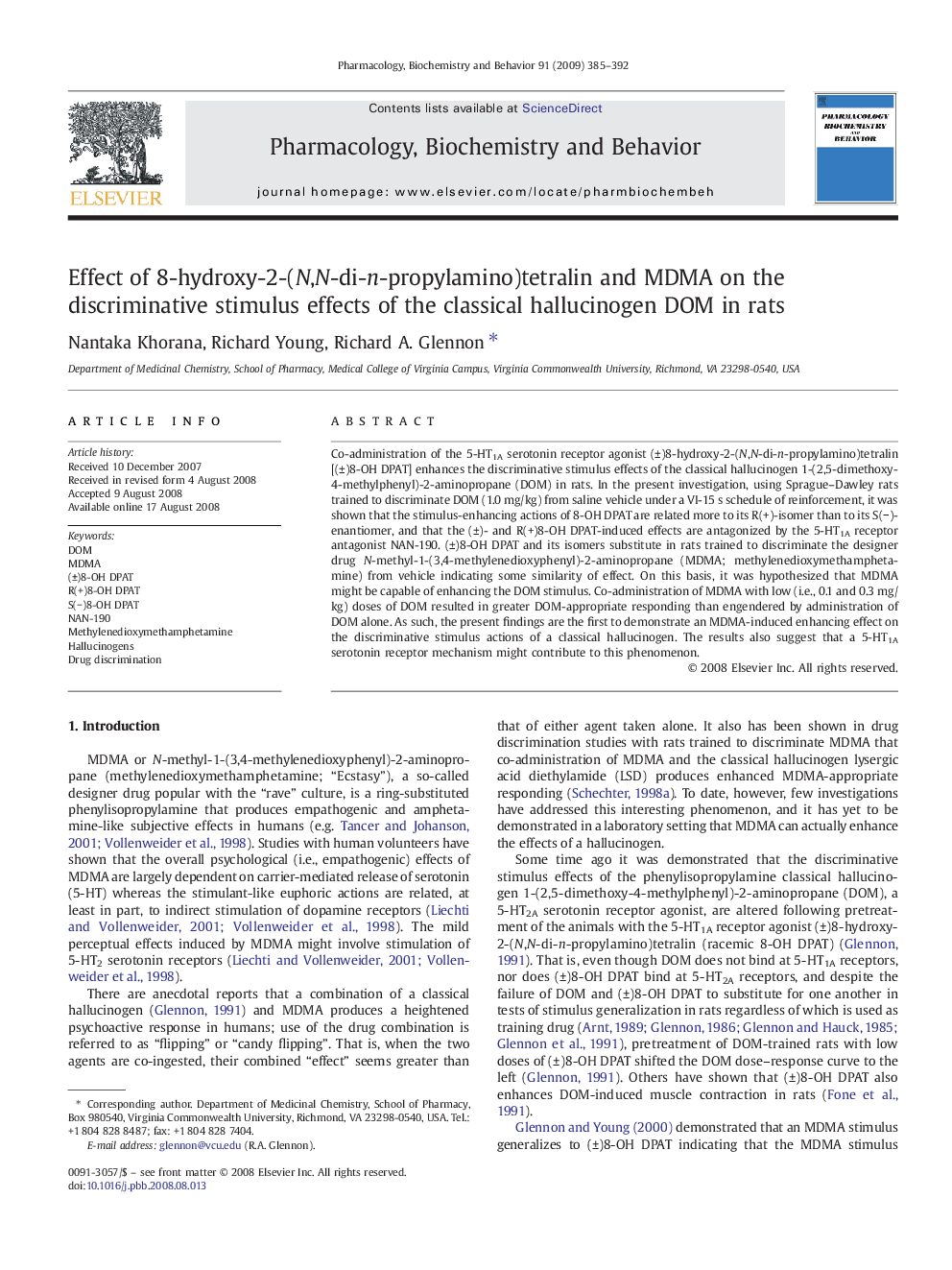| Article ID | Journal | Published Year | Pages | File Type |
|---|---|---|---|---|
| 2014139 | Pharmacology Biochemistry and Behavior | 2009 | 8 Pages |
Abstract
Co-administration of the 5-HT1A serotonin receptor agonist (±)8-hydroxy-2-(N,N-di-n-propylamino)tetralin [(±)8-OH DPAT] enhances the discriminative stimulus effects of the classical hallucinogen 1-(2,5-dimethoxy-4-methylphenyl)-2-aminopropane (DOM) in rats. In the present investigation, using Sprague-Dawley rats trained to discriminate DOM (1.0 mg/kg) from saline vehicle under a VI-15 s schedule of reinforcement, it was shown that the stimulus-enhancing actions of 8-OH DPAT are related more to its R(+)-isomer than to its S(â)-enantiomer, and that the (±)- and R(+)8-OH DPAT-induced effects are antagonized by the 5-HT1A receptor antagonist NAN-190. (±)8-OH DPAT and its isomers substitute in rats trained to discriminate the designer drug N-methyl-1-(3,4-methylenedioxyphenyl)-2-aminopropane (MDMA; methylenedioxymethamphetamine) from vehicle indicating some similarity of effect. On this basis, it was hypothesized that MDMA might be capable of enhancing the DOM stimulus. Co-administration of MDMA with low (i.e., 0.1 and 0.3 mg/kg) doses of DOM resulted in greater DOM-appropriate responding than engendered by administration of DOM alone. As such, the present findings are the first to demonstrate an MDMA-induced enhancing effect on the discriminative stimulus actions of a classical hallucinogen. The results also suggest that a 5-HT1A serotonin receptor mechanism might contribute to this phenomenon.
Related Topics
Life Sciences
Biochemistry, Genetics and Molecular Biology
Biochemistry
Authors
Nantaka Khorana, Richard Young, Richard A. Glennon,
